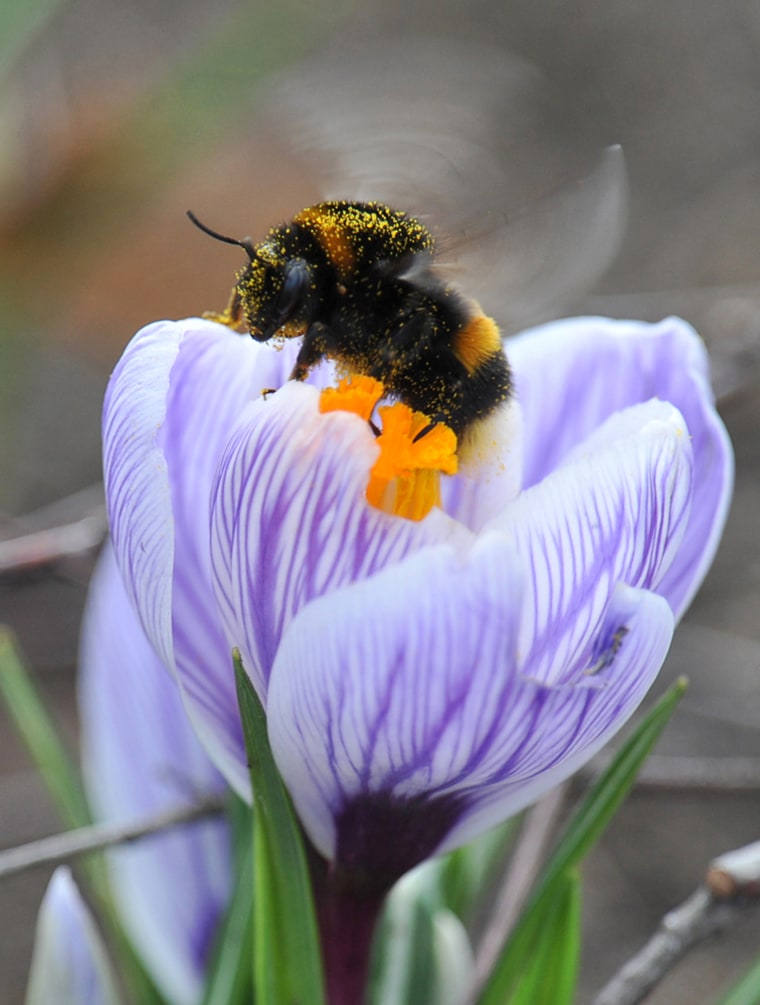They might look like they wander aimlessly from flower to flower, but bumblebees actually solve a complex mathematical problem to find the shortest possible route between sources of food.
A study found that — despite having a brain the size of a grass seed — bumblebees were able to overcome the so-called "Traveling Salesman Problem" with apparent ease.
Scientists at the University of London said the insects were the first animals known to be capable of the feat.
"Foraging bees solve traveling salesman problems every day," researcher Dr Nigel Raine said. "They visit flowers at multiple locations and, because bees use lots of energy to fly, they find a route which keeps flying to a minimum.
"Despite their tiny brains bees are capable of extraordinary feats of behavior," he added. "We need to understand how they can solve the 'Traveling Salesman Problem' without a computer. What shortcuts do they use?"
Computers solve the problem by comparing the length of all possible routes and choosing the shortest, the researchers said in a statement.
Shortest route
In the study, which is due to be published in The American Naturalist this week, computer-controlled artificial flowers were used to test whether bees followed a route defined by the order in which they discovered the flowers or if they worked out the shortest route.
After exploring the location of the flowers, bees quickly learned to fly the shortest route, the researchers said.
The information could be used to improve understanding of how bees pollinate crops and wild flowers, the scientists added.
But the researchers added that humans might also be able to learn from the bees.
"Our lifestyle relies on networks such as traffic on the roads, information flow on the Web and business supply chains," the statement said. "By understanding how bees can solve their problem with such a tiny brain we can improve our management of these everyday networks without needing lots of computer time."
